The story behind unusual Shinto shrine guardians
Visitors to shrines in Japan are usually greeted by a pair of fierce statues, komainu, on either side of the entrance. Komainu, lion-dogs, have been guarding shrines and temples in Japan since the 6th century, when they came along with Buddhism to Japan from China as shishi, or guardian lions. Over the years they developed into the distinctively Japanese lion-dog statues we see today.
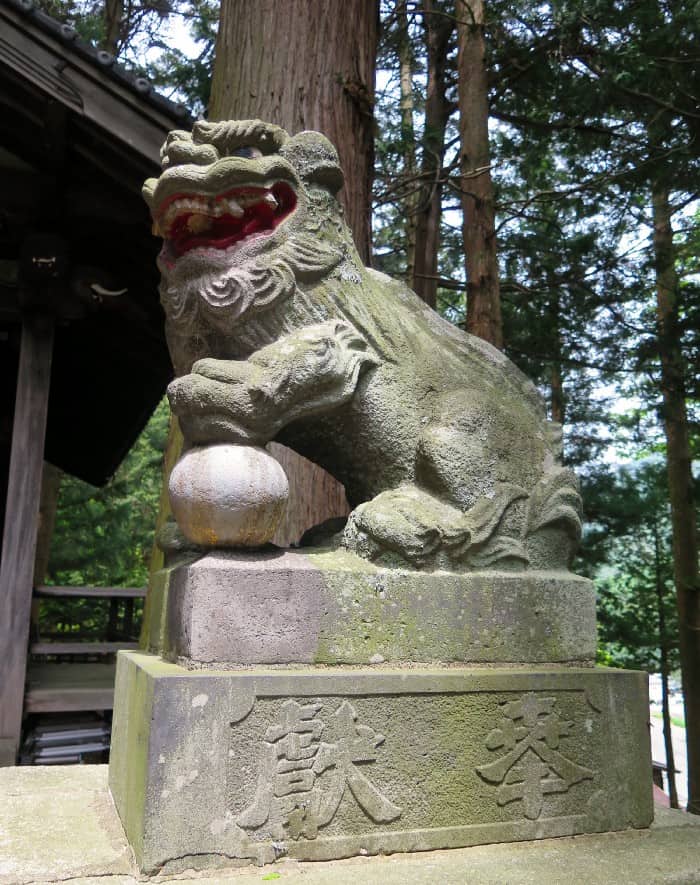
Komainu come in pairs: one with an open mouth, a-gyo, and one with a closed mouth, un-gyo. A and un are the first and last letters of both the Sanskrit and the Japanese alphabets, representing the beginning and ending of all things, not unlike the Alpha and the Omega in Western tradition.
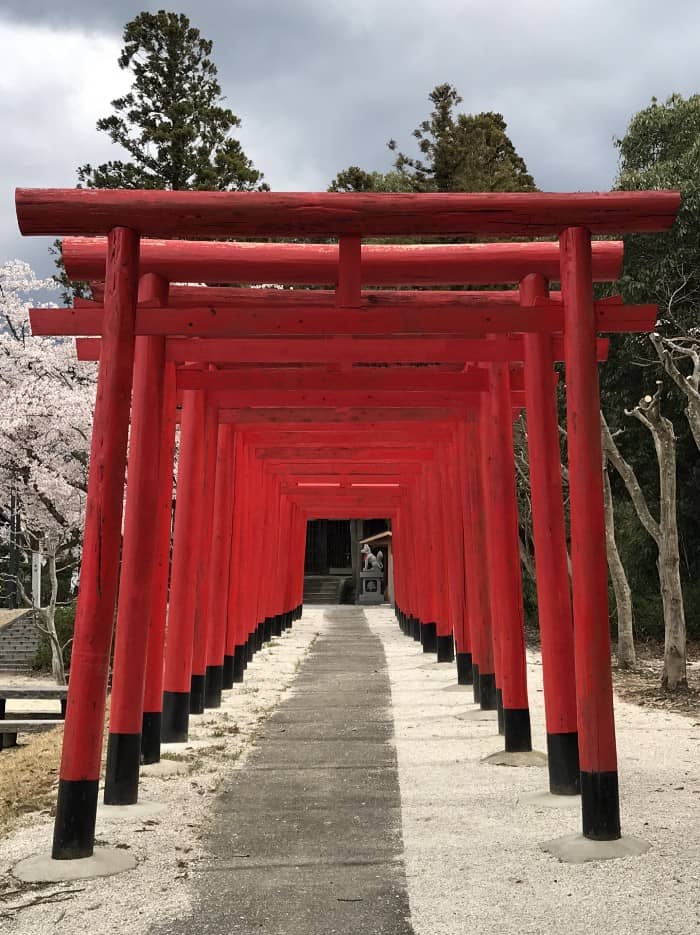
If you visit one of the over 30,000 Inari Shrines in Japan, you will see fox guardians. There are a small number of shrines guarded by tigers, and even fewer guarded by wild boars, koma-shishi. Not to be confused with the Chinese shishi, or lions, this word shishi is from the Japanese inoshishi, or wild boar.
Why boars?
In the 8th century, the powerful monk Dōkyō cured the illness of the retired Empress Kōken. In gratitude, she granted him political and religious authority. The ambitious Dōkyō then connived to receive a message from an oracle at Usa, an important Shinto shrine in Oita Prefecture, which stated that he was destined to become the next emperor.
In order to confirm Dōkyō’s message, the devout Buddhist and influential aristocrat, Wake no Kiyomaro, was sent to Usa Shrine. He received a contradictory message from an oracle declaring that the direct imperial line of the Sun Goddess, Amaterasu, should not be broken. Dōkyō could not become emperor.
This news enraged the monk, who used his influence with the empress to have Kiyomaro beaten, to have his hamstrings severed, and to banish him to Osumi, in what is now Kagoshima Prefecture.
On his way south into banishment, the faithful Kiyomaro wanted to again visit Usa, to thank the oracle for the message that protected the sanctity of the imperial line and prevented the power-hungry monk, Dōkyō, from seizing control.
As Kiyomaro’s palanquin was carried from the northern coast of Kyushu along the road leading to the inland shrine, 300 wild boars suddenly rushed out of the woods and surrounded his entourage. The animals escorted and protected Kiyomaro as he traveled the final 40 kilometers to Usa. When he disembarked from his palanquin, his legs were miraculously healed.
From that time on, boars were considered the divine attendants of Kiyomaro, protector spirits, and messengers of the gods.
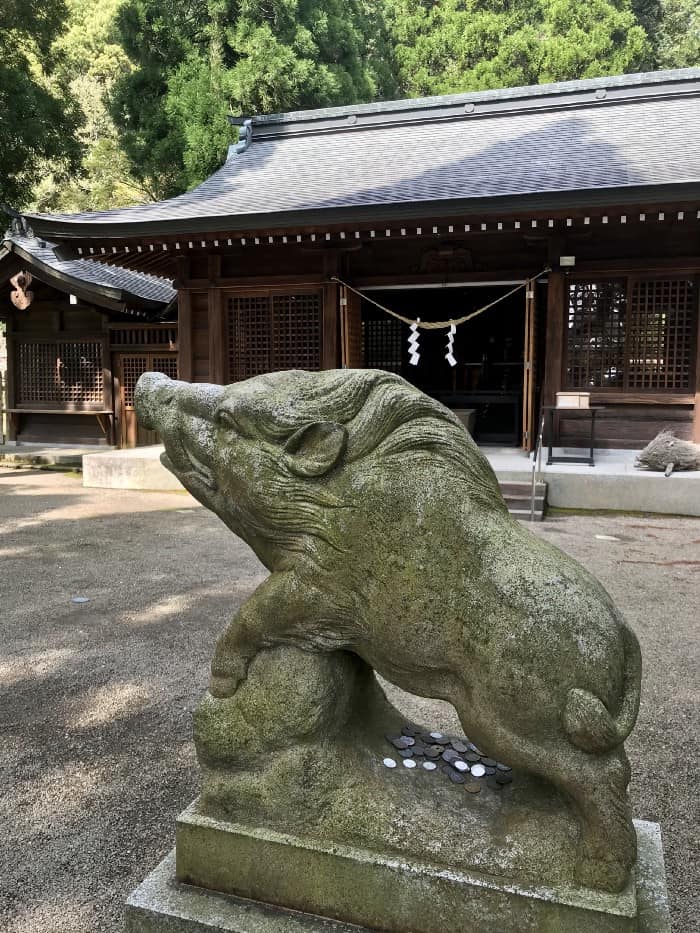
The Tables are Turned
While Kiyomaro was in Osumi, Empress Kōken returned to the throne as Empress Shōtoku. Upon her death, the newly installed Emperor Kōnin turned on the monk Dōkyō and banished him to Shimotsuke, now Tochigi Prefecture. He then recalled Kiyomaro from exile and granted him the elevated position of Junior Minister of State and governor of his home province of Bizen as well as Mimasaka, both part of Okayama Prefecture today.
Kiyomaro requested an investigation into the oracles at Usa. This caused a great upheaval, exposed two frauds, and led to the resignation of the head priest.
Kiyomaro remained an influential figure in the Nara government and was instrumental in relocating the capital to Heian-kyo (Kyoto) under the reign of Emperor Kanmu. This move was partially instigated as a means of separating the powerful Nara Buddhists from their influence on government.
After Kiyomaro’s death, he was deified as the Shinto kami, Goō Daimyōjin, Great Protector of the Emperor.
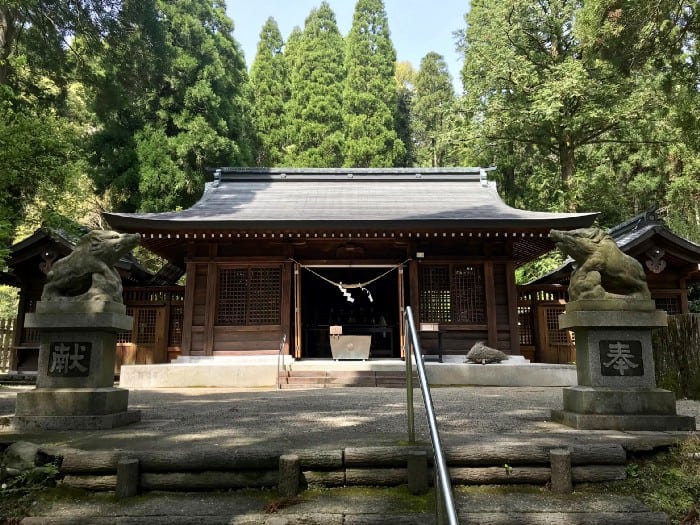
Wake Shrine
In 1853, Shimadzu Nariakira, the lord of Satsuma and Osumi (Kagoshima Prefecture), conducted research that determined where Kiyomaro had stayed during his exile. Wake Shrine was built in that place for the deified Kiyomaro, in appreciation of his important contribution to saving the direct lineage of the imperial throne. Boars are the guardians, and a white boar captured from the nearby mountains, affectionately called Wake-chan, is kept as a sacred animal.
Curiously, Wake Shrine is home to the largest ema, prayer tablet, in the world. It depicts Kiyomaro and a white boar posed in front of Inukai Falls, the beautiful waterfall located across from the shrine.
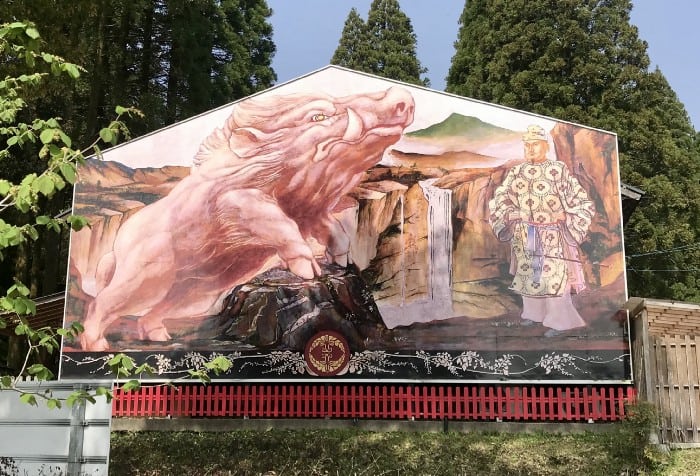
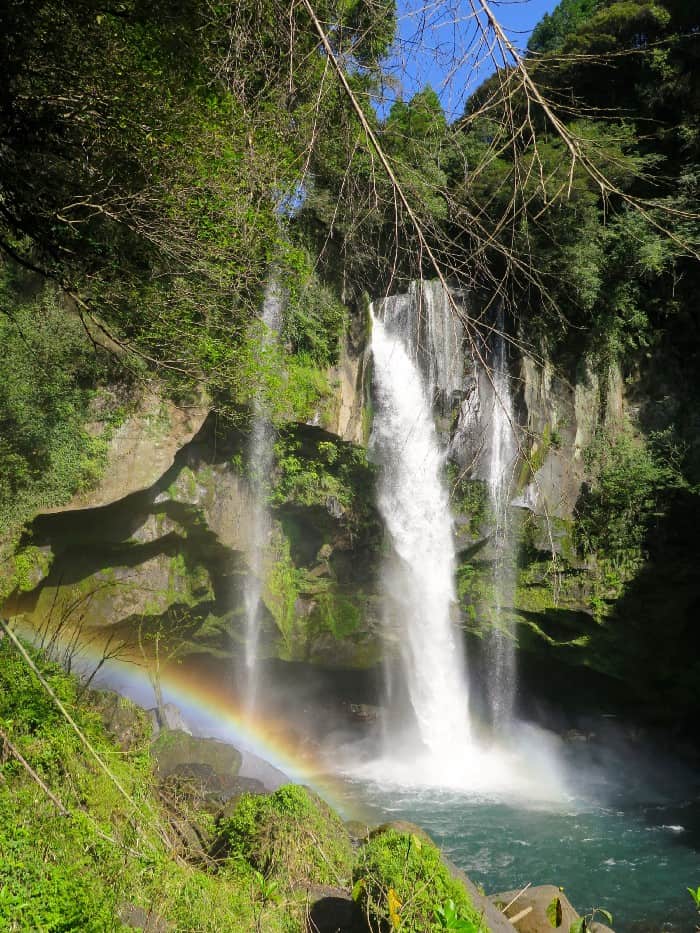
Photos ©Diane Tincher
If you have questions about Japan or suggestions for articles, please add them in the comments. For more photos and information on Japan, follow me on instagram at: https://www.instagram.com/more_than_tokyo/




